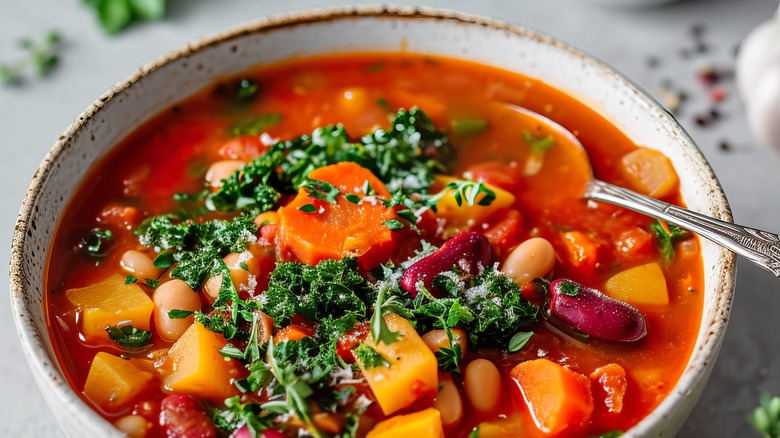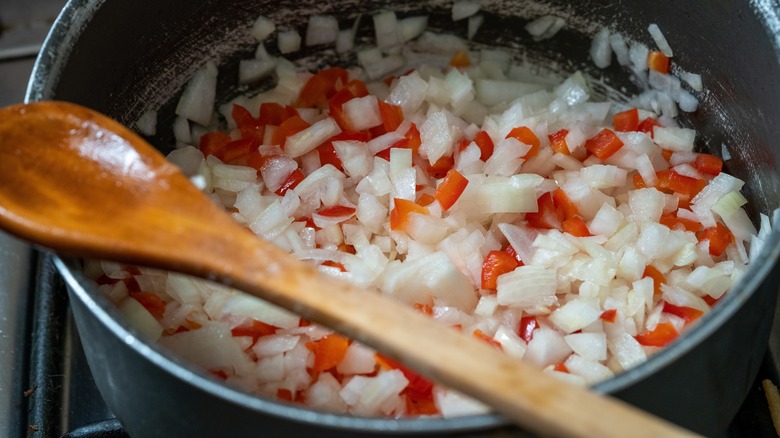How To Cook Vegetable Soup So The Veggies Don't Get Mushy
It's finally fall, the perfect time for warm, comforting recipes. As far as autumnal comfort food goes, few things beat a seasonal vegetable soup. But nothing dulls the excitement of sitting down for a big bowl of minestrone more than mushy, waterlogged vegetables. What gives?
To find a solution, The Takeout reached out to celebrated chef Matt Baker. Baker's commitment to using fresh, seasonal ingredients sourced from local farms is one of the things that sets him apart as a chef. It's far from the only thing though — Baker's remarkable skill, know-how, creativity, and experience all contribute to his international acclaim.
Raised in Houston, Texas, Baker attended Miami's Johnson & Wales University before moving to Singapore to work as executive chef at Krish. He eventually settled in Washington, D.C., where he now uses his international experience and classical French training to operate Gravitas, Michele's, and Baker's Daughter. In 2020 and 2021, his work at Gravitas earned a Michelin star. He's opening his first steakhouse, Lucille's at Kimpton The George hotel, in the near future.
Baker's advice? Don't rely on the vegetables to flavor the broth. Instead, he suggests making a separate broth beforehand. "Generally, I would make a vegetable stock/broth first and then strain out the vegetables," Baker said. "Then start the soup with new vegetables, that are all diced or cut very thoughtfully."
Sauté the vegetables for your soup
But wait — don't just throw the vegetables in with the broth. "Sauté [the vegetables] and season well, and then add in the vegetable broth," says Matt Baker. But why would sautéing help if they're getting cooked in the broth anyway? Two main reasons: flavor and texture. Boiling water can't top 212 degrees Fahrenheit. The Maillard reaction, aka browning, doesn't occur until at least 284 degrees Fahrenheit. Oil can reach higher temperatures than water, so when you sauté the vegetables in oil, you give them the chance to brown. They don't need to be crispy – just let them take on enough color to add a little flavor.
Sautéing the vegetables beforehand also keeps the flavors concentrated. When you boil the vegetables, the flavors disperse in the water. That's perfect if you're making a broth or stock, but makes for flavorless floating vegetable lumps. By making a separate stock before, then combining it with the sautéed veggies, the flavor stays concentrated.
Sautéing also helps pull water out of the veggies — while boiling logs them down with extra moisture. If you sauté them beforehand, they'll get soft, but not soggy. Plus, you'll get more control over exactly how soft you want them to be. Just make sure to pick the right oil when you sauté those vegetables: A neutral, all-purpose oil like vegetable oil works fine for most purposes, but you can also experiment with other fats and oils to add flavor.

